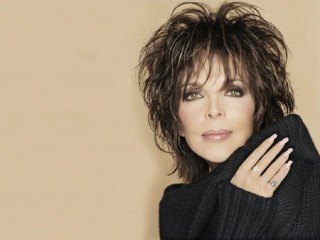
Carole Bayer Sager biography
Date of birth : 1947-03-08
Date of death : -
Birthplace : New York City, U.S.
Nationality : American
Category : Arts and Entertainment
Last modified : 2012-01-17
Credited as : Singer-songwriter, painter, Grammy Award winner
0 votes so far
"A much-repeated story in the music industry is that Carole Bayer Sager's lyrics have become such an important part of contemporary music that one record trade publication proclaimed a new album unique simply because it did not contain one Carole Bayer Sager song," wrote Linda Dozoretz in BMI: Music World. Throughout the 1970s and 1980s, Sager has been one of the most prolific and successful lyricists at work in the music industry. The list of stars who have recorded Sager's songs reads like a pantheon of popular music: Frank Sinatra, Dolly Parton, Dionne Warwick, Johnny Mathis, Barbra Streisand, Aretha Franklin, Roberta Flack, Carly Simon, Bette Midler, and Michael Jackson, to name only a few.
Likewise, a partial list of her song credits is enough to read like a hit parade: "A Groovy Kind of Love," "Heartbreaker," "Midnight Blue," "Nobody Does It Better," "Break It to Me Gently," "Arthur's Theme," and "That's What Friends Are For." Regarding the special appeal of Sager's songs, Dozoretz commented: "Love and joy have been the themes of much of Carole's music over the years. If one common denominator had to be found, it would be that her lyrics convey a strong sense of emotion, and people are touched by and remember her words."
Sager began writing songs as a teenager, while a student at New York's High School for Performing Arts where she studied piano and drama. She told Dozoretz that "songwriting has always been my most reliable means of communication." Her first song came when she was only fifteen, the 1966 hit "A Groovy Kind of Love," which was recorded by Wayne Fontana and the Mindbenders.
Nine years would pass, however, before her next hit, 1975's "Midnight Blue," co-written with and recorded by singer-composer Melissa Manchester. Sager described to Suzanne O'Malley in Glamour the perseverance that carried her through those early struggling years. "I kept writing, even though not with the greatest of confidence. If you hang in long enough--if you really love what you're doing and you're not on a time schedule that says 'if I don't have this done in three weeks, I'll go into shoe manufacturing'--it will happen."
In 1975, Sager met Oscar-winning composer Marvin Hamlisch ( A Chorus Line and The Sting ), with whom she formed a professional collaboration that developed into a personal relationship. One of their early successes was the hit song "Nobody Does It Better" from the film The Spy Who Loved Me, which earned Sager her first Academy Award nomination. But the pair's long-running Broadway musical, They're Playing Our Song, was their greatest success and brought their songwriting/personal relationship into the public eye. Written by Neil Simon, with music by Hamlisch and lyrics by Sager, They're Playing Our Song portrays the mismatched relationship between Sonia Walsk, a lyricist, and Vernon Gersch, a composer. Loosely autobiographical, the show depicts the effects of a professional relationship that turns romantic. Opening on Broadway in 1979 with Robert Klein and Luci Arnaz in the starring roles, They're Playing Our Song went on for a successful three-year run.
The musical had a happy ending which did not, however, necessarily parallel Hamlisch and Sager's own story; some time after the musical's opening, Hamlisch and Sager parted ways. In 1979, Sager began writing songs with composer Burt Bacharach, whom she later married in 1982. Ever open about personal and emotional aspects of her life, and how they merge with her work, Sager remarked to Gail Buchalter in People: "? They're Playing Our Song ? is a romantic comedy.... Every night those people end up happy, kiss and take their curtain calls. But obviously, Marvin and I were not totally like those characters.... Marvin had a very fatherly way about him and liked to take care of me, but that brought out my childish qualities. Yet there was also an area within me that was fighting to be an adult.... With Burt, I do a lot of the taking care." Sager's collaborations with Bacharach marked new turning points in her songwriting career. In 1981, they were Oscar winners for the theme from the movie Arthur, and in 1986 received the song of the year Grammy for "That's What Friends Are For," which was recorded by Dionne Warwick, Elton John, Gladys Knight, and Stevie Wonder.
Sager's efforts on "That's What Friends Are For" were particularly gratifying for her. Both the artists and writer-producers of the recording donated its earnings to AIDS research. "A song has the potential to touch the people," Sager commented to Dozoretz, "and this one lived up to its potential." The year's biggest hit, "That's What Friends Are For" earned nearly $1 million for the American Foundation for AIDS Research, which bestowed Sager and Bacharach with its Humanitarian Award. Sager received another honor in 1986 when she was inducted into the National Academy of Popular Music Songwriters Hall of Fame.
Although she divides her time today between songwriting, being a mother, and working for charitable organizations, music is still her primary desire. "I love music, and I love being able to share joy and emotion through songs," she told Dozoretz. "Besides, I still get excited every time I turn on the radio and hear one of my songs. How could I ever give that up?"
Selective Works:
-Carole Bayer Sager Elektra, 1977.
-Carole Bayer Sager ... Too Elektra, 1978.
-Sometimes Late at Night Boardwalk, 1981.
Writings:
-Extravagant Gestures (novel), Arbor House, 1985.
















